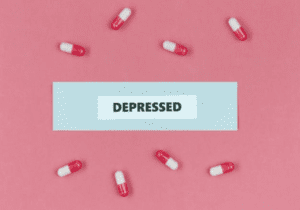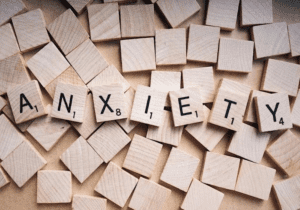Breathing Techniques
This article has been researched and written by Yassine Tayie. AI has not been used in producing this article.
Breathing has always played a central role in body-centered healing techniques such as meditation and yoga. It can also be found across various cultures and spiritual practices. On a less esoteric note, science has also shown interest in the subject, and studies have highlighted various positive effects of regular breathing exercises. Several studies (Laborde et al., 2017; Tharion et al., 2011; Lehrer et al., 2003) have shown the benefits of breathing techniques. Today, I’ll share with you two techniques that stands out:
1. The 365 Method – also known as cardiac coherence
This technique is simple to integrate into your routine. Its main goal is to activate your parasympathetic nervous system, which calms the heart rate, lowers cortisol levels (the stress hormone), and improves your ability to process emotional information.
Known benefits include:
- Reduction in stress and anxiety levels
- Improved emotional regulation and mental clarity
- Better sleep quality
- Lowered blood pressure
- Enhanced heart rate variability (HRV), a marker of resilience
- Improved focus and cognitive performance
How to practice it:
- 3 times a day
- 6 breaths per minute → Inhale slowly for 5 seconds – hold for 1 – exhale slowly for 5 seconds
- For 5 minutes
I usually recommend doing it in the morning, midday, and evening. But the important part is adapting it to your lifestyle — you can practice it while walking to work, during a lunch break, or before sleep. What matters most is consistency.

2. The Wim Hof Method
You’ve surely heard of this popular gentleman who enjoys swimming in icy water. That alone sparked scientific curiosity, leading to the well-known Kox et al. (2014) study at Radboud University Medical Center in the Netherlands, which found that applying the WIMHOF method leads to:
- Reduced inflammation and improved immune response
- Better stress resilience and nervous system regulation
- Enhanced mood, focus, and cold tolerance
How to Apply the Wim Hof Method?
1. Breathing
- 30–40 deep breaths (inhale fully, exhale passively)
- After the last exhale, hold your breath as long as is comfortable
- Inhale deeply, hold for 15 seconds, then release
- Repeat for 3–4 rounds
2. Cold Exposure
- Start with cold showers, gradually increase duration
- Only progress to ice baths once you’re adapted—and always with caution
3. Mindset
- Stay calm and focused – consistency is key
To summarize :
- Cardiac Coherence (365) tends to bring a quiet kind of calm — a sense of slowing down, grounding, and softening. It’ s not dramatic, but the effects build over time. Clients often tell me they feel more centred, less reactive, and more able to stay present in their day. It’ s simple, discreet, and gently restores balance — like resetting your inner rhythm.
- Wim Hof, on the other hand, is a more intense experience. It wakes you up — physically and mentally. Many describe a rush of energy, light-headedness, and even a sense of power or control. There ’ s something raw and physical about it, especially when you add cold exposure. It’ s great for those looking to challenge themselves, feel more alive, or push through mental or emotional blocks.
Bear in mind these tips are for support, initiation. They are not cures, but they can help enhance your mood and widen your window of tolerance. Nothing, however, replaces a deep therapeutic work.
The Future of Depression Treatment
According to the World Health Organization (WHO), depression impacts more than 264 million people globally. Once diagnosed, depression treatment can be by medications, psychotherapy, or a combination of the two. While…
How to Talk to Your Therapist When You Have Social Anxiety
Social anxiety disorder (SAD), also called a social phobia, is characterized by intense fear or anxiety of being negatively evaluated, judged, or rejected in a social situation. Individuals with social anxiety often …
Managing Depression During Social Isolation
The outbreak of the global coronavirus pandemic is stressful for many people. Since the World Health Organization (WHO) declared the COVID-19 outbreak a global pandemic, regions across the world have mandated quaran…
What are Cognitive Behavioral Therapists?
Cognitive behavioral therapy (CBT) is a common type of talk therapy (psychotherapy) that has been demonstrated effective for a range of mental health struggles including anxiety disorders, depression, substance abuse …
Managing COVID-19 – Related Anxiety
The recent increase of COVID-19 cases in Europe and in the rest of the world has seen a great increase of strong emotions, such as overwhelming fear and worry, in our community. Despite the fact that the infection has…
What to Expect at Your First Family Therapy Session
Are you feeling a bit nervous about your first family therapy session? It’s very common to feel a bit apprehensive before starting any type of therapy. Therapy involves sharing personal information and intimate detail…
What do you really know about ADHD?
ADHD, or attention deficit disorder, is a commonly known mental health disorder and can be easily described by teasing apart its acronym. Most of us have been made aware of the condition through social media, advertis…
Taking Your First Steps to Seeing a Therapist
More often than not, the first step people take towards overcoming their mental illnesses, is making the decision to talk to someone about it, whether it’s a friend or a professional. It doesn’t help that our cultural…
The Benefits of Family Therapy
Family plays an essential role in our emotional, spiritual, and intellectual lives. Over the past few decades, the nuclear family has evolved and changed. Despite these changes to what a particular family unit include…
- « Previous
- 1
- …
- 3
- 4
- 5










